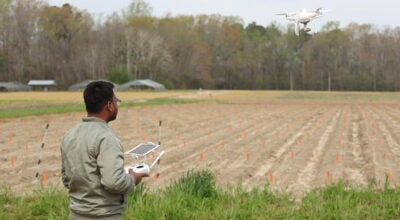Get your green on
Published 8:16 pm Saturday, March 27, 2010
With the weather warming up, some of your neighbors will be working overtime to assure that their yards are the greenest in the neighborhood.
Some of them, however, are missing the most basic point. A healthy lawn begins with the right grass.
“Three-quarters of the lawns in the area are Fescue grass, and one-quarter are Bermuda grass,” said Rex Cotten of the Virginia Cooperative Extension Service. “Fescue is popular, but only two-thirds of lawns in Suffolk should be Fescue. Bermuda should be one-third.”
It is imperative to match your soil type with the right grass.
“If you have bright sands, you need a Bermuda grass,” he said. “If you have medium to darker soils that hold moisture, look at a turf-type grass like Fescue.”
Bermuda grass has a deep root system and thrives with less water than Fescue.
“Fescue is a popular turf grass, but it doesn’t like a sandy soil,” he said. “When folks plant it where it doesn’t belong, it dies in the July and August heat, and wire grass comes over.”
Wire grass, he explained, is a wild strand of Bermuda grass.
If you realize you have the wrong grass for your soil, though, don’t uproot it now.
“Stores sell the most seed in spring,” he said. “Spring comes and folks get the itch, and there they go.”
Grass should be planted in May or September, depending on what kind it is.
“Bermuda needs to be established and reseeded by May 15 or in the next two to three weeks after that,” he said. “It gives them a chance to get established before the real hot, dry season sets in. It’ll have the whole summer to put out a good root system to carry through the winter.”
“Fescue should be established in the fall, about September. If you seed fescue in the spring, you get top growth, but very little root growth, which will cause you to lose it in the summer heat.”
Once you get the right grass for your soil, over-seeding, cutting, irrigating and fertilizing are key to outdoing the Jones family down the street this summer.
The same time you establish your lawn, over-seed it.
“After you establish your lawn, the best weed control is to over-seed your lawn and keep it dense,” he said. “That way, the sun can’t shine on the ground, and weeds can’t crowd it out.
Tips for cutting your grass depend on what kind of grass you have.
“It’s important when you have Fescue to cut it high,” he said. “No closer than three-and-a-half to four inches. The more blade you have, the more ability it has to withstand hot, dry weather.”
Because Bermuda grass has a deeper root system, it is recommended you trim it shorter.
“Bermuda likes a closer trim,” he said. “By keeping it trimmed to about two-and-a-half inches, it’ll cause it to branch out.”
To make sure your lawn is getting the water it needs, it’s important to water it at the right time.
“If you’re going to irrigate your lawn, do it between 5 a.m. and 9 a.m.,” Cotten said. “Do not do it late at night. If you do it at 6 p.m. and then the dew sets in at 9 p.m., you have 14 hours of wet foliage — which diseases like.”
When fertilizing — like with cutting the grass — be mindful of what kind of grass you have.
“Fertilize Bermuda when it starts to green up, and don’t put it all down at once,” he said. “Split it up in three applications throughout the summer.”
And a caution to those using herbicide: If you plan on using 2,4-D herbicide on broadleaf weeds, don’t do it near a cotton field.
“If cotton so much as smells it in the air, it’ll droop-up a cotton field,” he said. “You might have a legal situation on your hands. If there’s a cotton field anywhere in sight, do not use it.”






